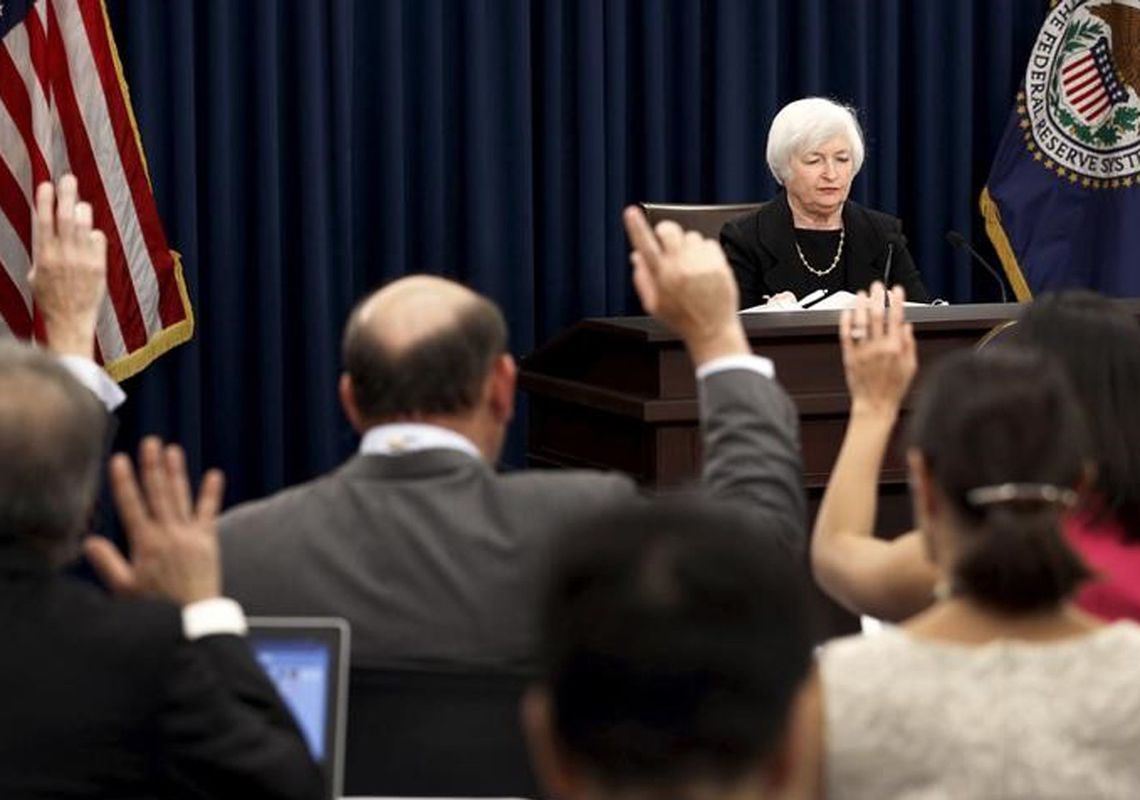
CAMBRIDGE – Nothing describes the United States Federal Reserve’s current communication policy better than the old saying that a camel is a horse designed by committee.
Various members of the Fed’s policy-setting Federal Open Markets Committee (FOMC) have called the decision to keep the base rate unchanged “data-dependent.” That sounds helpful until you realize that each of them seems to have a different interpretation of “data-dependent,” to the point that its meaning seems to be “gut personal instinct.”
In other words, the Fed’s communication strategy is a mess, and cleaning it up is far more important than the exact timing of the FOMC’s decision to exit near-zero interest rates. After all, even after the Fed does finally make the “gigantic” leap from an effective federal funds rate of 0.13% (where it is now) to 0.25% (where is likely headed soon), the market will still want to know what the strategy is after that. And I fear that we will continue to have no idea.
No consensus
To be fair, deciding what to do is a very tough call, and economists are deeply divided on the matter. The International Monetary Fund has weighed in forcefully, calling on the Fed to wait longer before raising rates. And yet central bankers in the very emerging markets that the IMF is supposedly protecting have been sending an equally forceful message: Get on with it; the uncertainty is killing us.
Personally, I would probably err on the side of waiting longer and accept the very high risk that, when inflation does rise, it will do so briskly, requiring a steeper path of interest-rate hikes later. But if the Fed goes that route, it needs to say clearly that it is deliberately risking an inflation overshoot. The case for waiting is that we really have no idea of what the equilibrium real (inflation-adjusted) policy interest rate is right now, and as such, need a clear signal on price growth before moving.
But only a foaming polemicist would deny that there is also a case for hiking rates sooner, as long as the Fed doesn’t throw random noise into the market by continuing to send spectacularly mixed signals about its beliefs and objectives. After all, the U.S. economy is at or near full employment, and domestic demand is growing solidly.
While the Fed tries to look past transitory fluctuations in commodity prices, it will be hard to ignore rising consumer inflation as the huge drop of the past year – particularly in energy prices – stabilizes or even reverses. Indeed, any standard decision rule used by central banks by now dictates that a hike is long overdue.
But let’s not make the basic mistake of equating “higher interest rate” with “high interest.” To say that 0.25%, or even 1%, is high in this environment is pure hyperbole. And while one shouldn’t overstate the risks of sustained ultra-low rates to financial stability, it is also wrong to dismiss them entirely.
With the decision about raising rates such a close call, one would think that the Fed would be inclined to do it this year, given that the chair and vice chair have pretty much told the market for months that this will happen. The real reason for not hiking by the end of the year is public relations.
Let’s suppose the Fed raises interest rates to 0.25 basis points at its December meeting, trying its best to send a soothing message to markets. The most likely outcome is that all will be fine, and the Fed doesn’t really care if a modest equity-price correction ensues.
No, the real risk is that, if the Fed starts hiking, it will be blamed for absolutely every bad thing that happens in the economy for the next six months to a year, which will happen to coincide with the heart of a US presidential election campaign. One small hike and the Fed owns every bad outcome, no matter what the real cause.
The Fed of course understands that pretty much everyone dislikes interest-rate hikes and almost always likes rate cuts. Any central banker will tell you that he or she gets 99 requests for interest-rate cuts for every request for a hike, almost regardless of the situation.
The best defense against these pressures is to operate according to utterly unambiguous criteria. Instead, however good its intentions, the net effect of too much Fed speak has been vagueness and uncertainty.
The lack of clarity creates market volatirity
So what should the Fed do? My choice would be to have it explain the case for waiting more forthrightly: “Getting off the zero bound is hard, we want to see inflation over 3% to be absolutely sure, and then we will move with reasonable speed to normalize.” But I also could live with, “We are worried that if we wait too long, we will have to tighten too hard and too fast.”
Throwing out the rulebook made sense in the aftermath of the 2008 financial crisis. It doesn’t anymore. And today’s lack of clarity has become a major contributor to market volatility – the last place the Fed should want to be.
It’s wrong to vilify the Fed for hiking, and it’s wrong to vilify it for not hiking; if it is such a close call, it probably doesn’t matter so much. But, at this critical point, it is fair to ask the Fed for a much clearer message about what its strategy is, and what this implies for the future.
If Fed Chair Janet Yellen has to assert her will over the FOMC for a while, so be it. Somebody on the committee has to lead the camel to water.
(C)Project Syndicate
